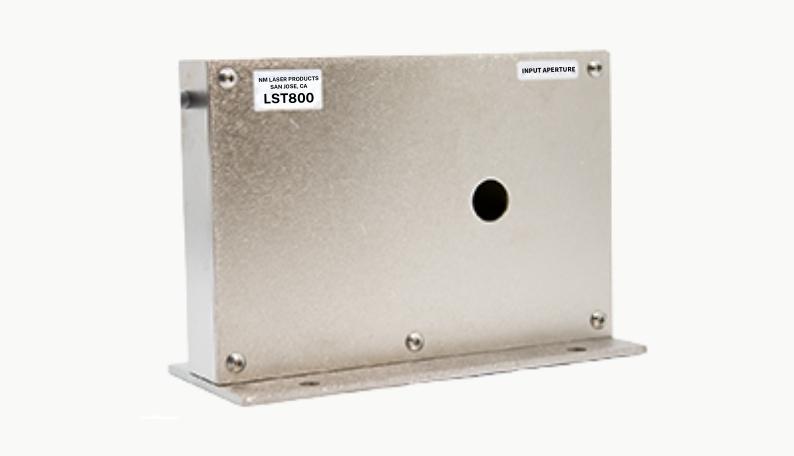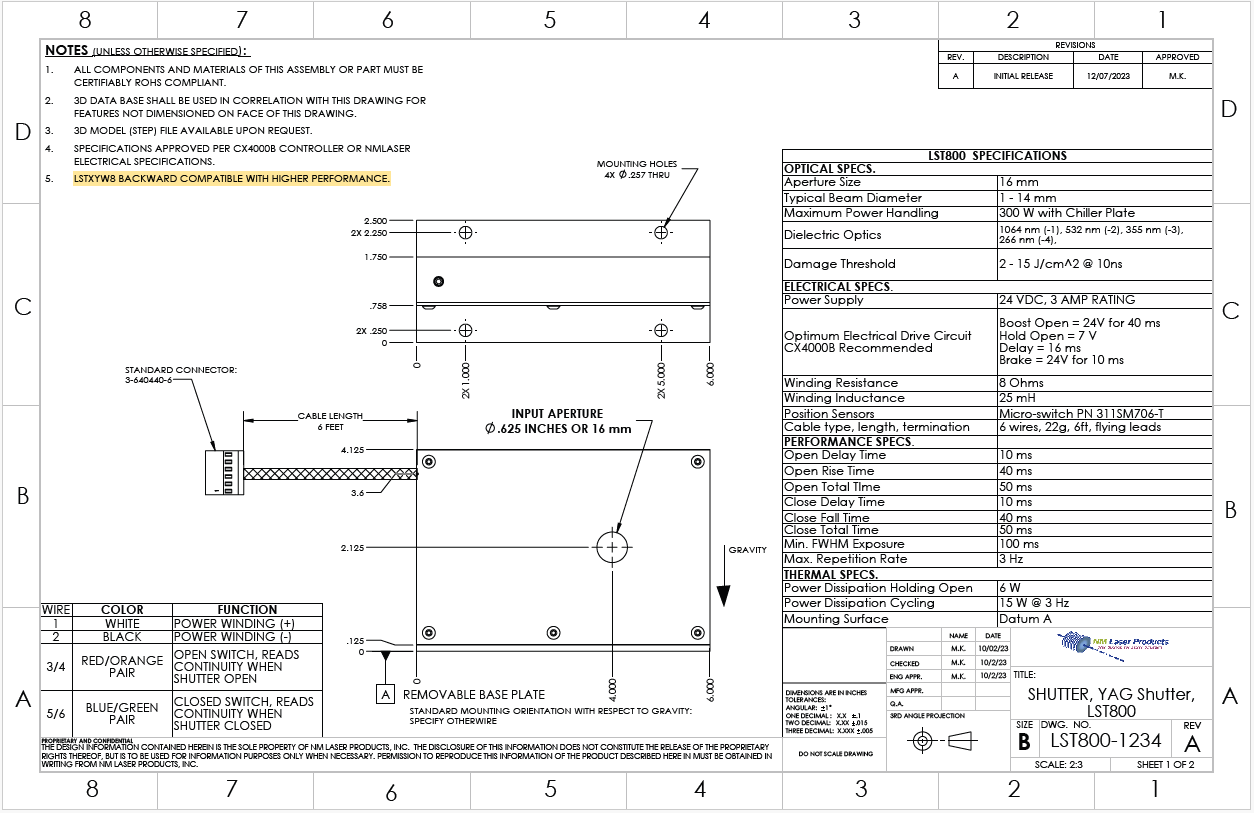
LST800-1234 Laser Shutter
Features
Optical Power Handling: 300 W
Aperture: 16 mm
Switching Speed: 40 ms
LIDT: 2 - 15 J/cm2 @ 10ns
Wavelength: 1064/532/355/266 nm
Optical Power Handling: 300 W
Aperture: 16 mm
Switching Speed: 40 ms
LIDT: 2 - 15 J/cm2 @ 10ns
Wavelength: 1064/532/355/266 nm
$1,495.00
Applications
Joule Level Pulses/Gating
Laser Safety Interlock
Thin Zones
LSTXYW8 Upgrade
Joule Level Pulses/Gating
Laser Safety Interlock
Thin Zones
LSTXYW8 Upgrade
Optical Specifications
| Aperture Diameter | 16 mm |
| Typical Beam Diameter | 1 – 14 mm |
| Maximum Optical Power Handling | 300 W (+50 W Requires Water Cooling) |
| Optics | Dielectric |
| Wavelength | 1064 nm, 532 nm, 355 nm, 266 nm |
| Dielectric Optics Suffix | 1064 nm (-1), 532 nm (-2), 355 nm (-3), 266 nm (-4) |
| Laser Induced Damage Threshold | 2 – 15 J/cm2 at 10 ns |
Performance Specifications
| Open Delay Time | 10 ms |
| Open Rise Time | 40 ms |
| Total Open Time | 50 ms |
| Close Delay Time | 10 ms |
| Close Fall Time | 40 ms |
| Close Total Time | 50 ms |
| Minimum FWHM Exposure Capability | 100 ms |
| Maximum Shutter Repetition Rate | 3 Hz |
Thermal Specifications
| Thermal Power Dissipation Holding Open | 6 W |
| Thermal Power Dissipation, Repetitive Cycling | 15 W @ 3 Hz |
| Mounting Surface for Thermal Sinking | Datum A |
Custom Options
| Wire Length | Any 6length |
| Wire/Cable Type, Wire Gauge | Any 6-C cable |
| Connector | Any 6-Pin Connector, MTA Std. |
| Identification | Engraving, Labels |
Electrical Specifications
| Power Supply | 24 VDC, 3 AMP RATING |
| Optimum Electrical Drive Circuit | Boost Open = 24 V for 40 ms Hold Open = 7 V Delay = 16 ms Brake = 24 V for 10 ms |
| Recommended Controller | CX4000B |
| Winding Resistance | 8 ohms Nominal |
| Winding Inductance | 25 mH |
| Position Sensors | Micro-switch PN 311SM706-T |
| Cable/Wire Type, No., Length, Termination |
6-C cable, Six wires, 22 g, 6 ft., MTA-100 or flying leads |
Wire Pin # - Color
| 1 – White | Power Winding (+) |
| 2 – Black | Power Winding (-) |
| 3 – 4 – Red/Orange Pair | Open Switch, Reads Continuity When Shutter Open |
| 5 – 6 – Blue/Green Pair | Closed Switch, Reads Continuity When Shutter Closed |
Attributes
| Dimensions | 6 in. x 1 in. x 4 in. |
| Weight | ~1.5 lb. |
| Classification | Safety/Pulse Gating |
| Gravity Considerations | Mounting orientation will affect amount of power used to open. Not designed for upside-down mounting. |
| Specifications Date | Oct. 5, 2023 |
